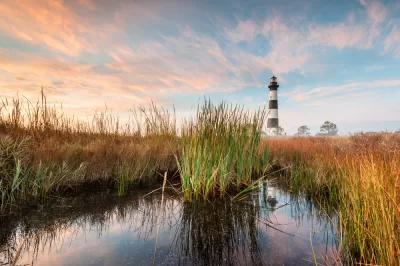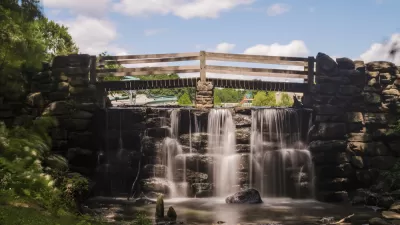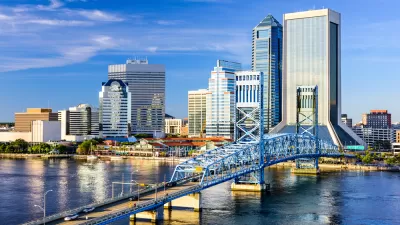More coastal cities and communities are turning to the "soft" solutions of living shorelines—relying on "a combination of oyster reefs, oyster shells, rocks, marsh plants, and other natural materials can be an effective alternative to seawalls."

Anne N. Connor explains some of the lessons learned from the destruction wrought by Hurricane Florence on the Carolina coastline in 2018:
While the areas with “hard” solutions — seawalls — sustained damage and significant erosion, a section of coastline with a “soft” solution, called a “living shoreline,” fared much better. According to the National Oceanic and Atmospheric Administration, the Beaufort Living Shoreline oyster reef and marsh was “intact after the storm, with minimal erosion.”
According to Connor, living shorelines are an increasingly common climate change adaptation tactic. There are more than 120 living shorelines around the country, an approach to coastal storm protection that proves both more effective and less expensive than seawalls.
The idea now has federal support as well, after America's Water Infrastructure Act of 2018 was signed into law by President Donald Trump. The law "requires the United States Army Corps of Engineers (USACE) to consider soft solutions such as living shorelines when planning to protect the coast against flooding."
FULL STORY: Why you want oysters and a salt marsh between you and a hurricane

Planetizen Federal Action Tracker
A weekly monitor of how Trump’s orders and actions are impacting planners and planning in America.

Map: Where Senate Republicans Want to Sell Your Public Lands
For public land advocates, the Senate Republicans’ proposal to sell millions of acres of public land in the West is “the biggest fight of their careers.”

Restaurant Patios Were a Pandemic Win — Why Were They so Hard to Keep?
Social distancing requirements and changes in travel patterns prompted cities to pilot new uses for street and sidewalk space. Then it got complicated.

Platform Pilsner: Vancouver Transit Agency Releases... a Beer?
TransLink will receive a portion of every sale of the four-pack.

Toronto Weighs Cheaper Transit, Parking Hikes for Major Events
Special event rates would take effect during large festivals, sports games and concerts to ‘discourage driving, manage congestion and free up space for transit.”

Berlin to Consider Car-Free Zone Larger Than Manhattan
The area bound by the 22-mile Ringbahn would still allow 12 uses of a private automobile per year per person, and several other exemptions.
Urban Design for Planners 1: Software Tools
This six-course series explores essential urban design concepts using open source software and equips planners with the tools they need to participate fully in the urban design process.
Planning for Universal Design
Learn the tools for implementing Universal Design in planning regulations.
Heyer Gruel & Associates PA
JM Goldson LLC
Custer County Colorado
City of Camden Redevelopment Agency
City of Astoria
Transportation Research & Education Center (TREC) at Portland State University
Camden Redevelopment Agency
City of Claremont
Municipality of Princeton (NJ)





























